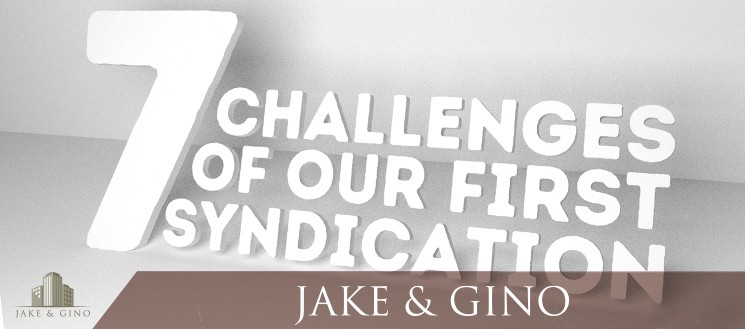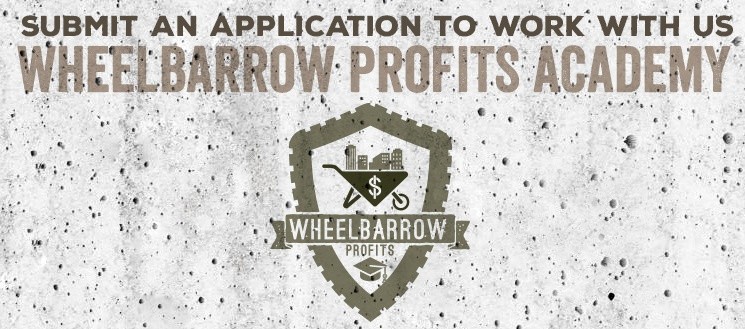
7 Challenges of our First Syndication
To syndicate or not to syndicate, that has been the question for Jake & I. On the one hand, building a portfolio of over 900 units without utilizing investor money has generated the ability to refinance and roll the proceeds into expanding the portfolio, and to create a sizable monthly cash flow. On the other hand, syndication would have allowed us to scale up much quicker and larger by utilizing investor funds and not relying solely on our on funds.
What we have found on our first syndication has left us confused as to whether we were better off syndicating right from the beginning or not. There is no right or wrong answer. The only true answer is to get in the game at any cost possible. And if that means syndication, then by all means, syndicate!!
In this article, I would like to discuss seven challenges, or difficulties that we faced when syndicating our first deal. To us, syndication added another layer of complexity and unknown that we had yet to experience. My goal is to prepare the reader for what to expect when they decide to join the realm of syndication.
1. TIMING
Have you ever heard the saying “Timing is everything in life?” In a syndication, you had better be prepared to move quickly in order to execute properly. Let’s discuss what other timing factors are present in a syndication.
Listen to the audio version of this Blog:
The syndicator needs to create syndication documents, which include the Private Placement Memorandum, the Subscription Agreement and the Operating Agreement. Contacting an attorney very early on in the process is key to preparing these documents on time to be able to distribute to your investors. Without these documents, the syndicator will not be able to collect funds for the deal.
My advice would be to contact an attorney as soon as possible to discuss the entire process. We contacted our attorney Kim Lisa Taylor a few months before we decided to enter the realm of syndication, and she was instrumental in helping us how to structure our deal, the time line of the deal process, and the overview of the documents that were going to be created.
You want to have these documents prepared ASAP so you can schedule webinars with your investors and begin to share the opportunity with your community.
2. INVESTOR PRESSURE
When we purchased our first property, the septic fields decided to fail six months after closing. What a relief that we had no investors to go back to for additional capital to address this emergency. We decided that we would withhold owner draws for the next few months to pay for the repair. In fact, I think this limiting belief of unforeseen pressure from investors held us back from pursuing syndication.
In our current deal, we have decided to raise some additional capital to be able to handle these unexpected situations. Pressure can be viewed as a positive and a negative. The investor pressure has “pressured” us into underwriting this deal with a higher level of scrutiny and an even more thorough level of due diligence. We have created an operating memorandum for our investors to view the deal, and have researched the market and the comps extensively. It has left us highly confident that this deal will perform as projected.
3. CUSTOMER RELATIONS MANAGEMENT
When Jake & I bought our first property, there was no need for a Customer Relationship Management (CRM) solution. It was just us, and we had yet to build out a real estate team. As we began to expand the portfolio and create the Jake & Gino education platform, we needed a way to manage all of these relationships.
Fast forward to our first syndication, and we have realized that the months of cultivating investor relationships have been very beneficial for us. Every syndicator needs a CRM to manage investor information, send out announcements, create newsletters, and communicate with their investors about the investment. The CRM has allowed us a level of transparency and legitimacy that we did not need when we were purchasing deals on our own.
If you would like to sign into our CRM, click here to register:
We are currently utilizing Active Campaign for investor data and email campaigns, and CrowdStreet for our investor portal.
4. BUILDING SUBSTANTIVE RELATIONSHIPS
When you decide to begin raising capital from investors, a large portion of your energy has to be dedicated to creating “substantive” relationships with investors. Hours of time have to spent on the phone conversing with investors on their goals, building and cultivating your list, and keeping your investors engaged in any future opportunities. Life was so much easier when it was only Jake and myself!
We have been blessed to bring aboard Mike Taravella, who is our asset manager.
5. STRATEGY
Our strategy focuses on buying, re-positioning, refinancing, and holding the asset for the long term. In a syndication, the idea of selling the asset after holding for a few years has entered the discussion. This challenge relates back to the investor, whereby our main focus has shifted from us as the partners, to returning the highest rate or return to the investor. And if that entails selling the asset after three years, then we may have to sell.
The thought of selling never even entered my mind before syndication, and our exit strategy now has to be specific for every deal that we syndicate. One deal may be a buy and hold, another may be a refinance and yet another may be a sell. Syndication has forced us to concentrate even greater on our exit strategy, which is a positive.
6. FINDING A DEAL
In this challenging market, it has become increasingly difficult to locate deals that generate the necessary rates of return to satisfy investor demands and pay us as the syndicator. When we bought our first property, I was content plowing back all of the excess cash flow into repairs and unit turns to increase the net operating income. If our returns were a bit light, we made up the shortfall when we stabilized the property and refinanced. Short-term pain for long-term gain.
In a syndication, the buy right leg of our framework is crucial. If we overpay for a property, that may limit our ability to invest capital in the deal to perform the necessary repairs to attract higher paying tenants. Every deal has to underwritten conservatively and the projected rent bumps have to also be conservative, as well as the expenses in running the property. This conservative underwriting eliminates many of the deals that come across our desk.
7. WORKING WITH AN ATTORNEY
We were fortunate when we were introduced to Kim Taylor, our syndication attorney. The biggest challenge we faced was our ignorance to the plethora of securities laws involving syndication. The only way to overcome this challenge is to lean in, listen to podcasts and join a community or group that has experience in syndication. As I previously stated, Kim was instrumental in overcoming this challenge.
If you are looking to learn more about the syndication process or joining a community that is focused on multifamily investing, click the pic below:
Syndication has become another tool in the toolbox, and it is a very powerful and useful tool. It will allow us to scale our portfolio and create wealth for our investors.
If you have any questions on syndication or are considering becoming an investor, please reach out to Mike Taravella at miket@randcre.com
What strategy do you prefer and why? Please leave a comment below!







